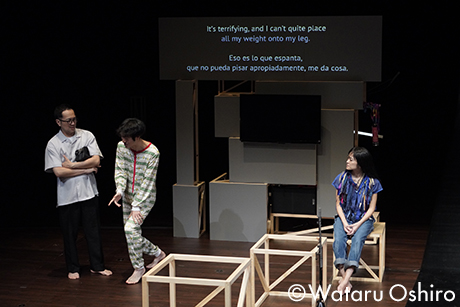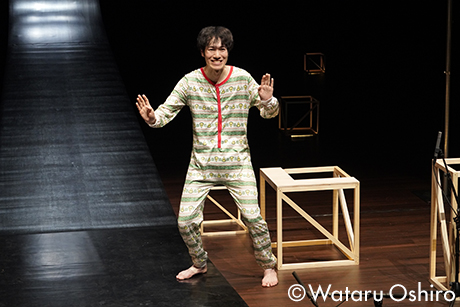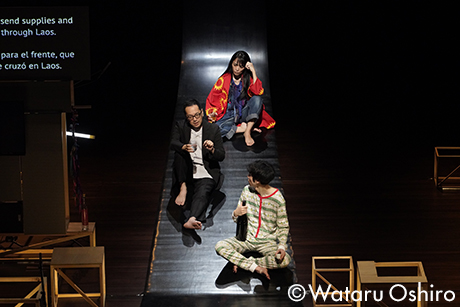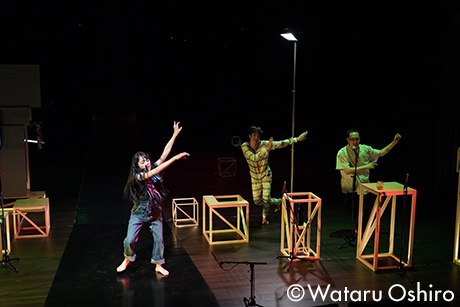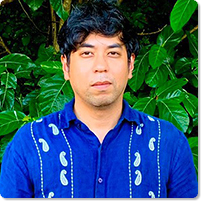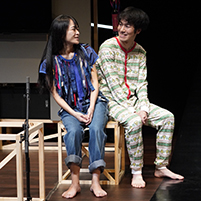Ghosts in Thailand
Man 1 is drinking in a certain place. Then, Man 2 and Woman 1 come in.
Man 1 developed a love of shochu (a liquor distilled from ingredients such as sweet potatoes, rice, etc.) and built a shochu manufacturing plant in Laos, and he now lives in neighboring Bangkok, Thailand.
According to him, shochu originated from a sake called “Lao-Lao” in Laos, which was introduced to the Ryukyu Islands (present-day Okinawa) and was actively traded with other Asian countries about 600 years ago. Initially, it became known as “Awamori” in the Ryukyu Islands. Later, it became known as shochu and spread throughout the country of Japan, which explains the various types of shochu there.
Eventually, Man 1 starts talking about the ghosts he encountered in a bar in Thailand. He was relieving himself in the simple restroom behind the bar when he spotted a house gecko on the wall staring at him. The man, who feels that the gecko is an incarnation of his relatives or someone close to him, leaves and seals the toilet with cloth and string.
When he returned to the bar, there was an unparalleled beauty sitting next to him. Soon they began living together, raising their legs at the same time, breaking bones in the same spots, getting angry at the same time, eating the same food, and laughing at the same time. She always showed up when the sun went down and was gone when he woke up in the morning.
One day, at midday, from a taxi he sees her walking through the streets of Bangkok and calls out to her. The taxi driver, surprised by the voice, collides with the car in front. In Thailand, when someone dies, it is customary to buy lottery tickets with a number related to that person, and for the same reason, people surround taxis to see the license plate number of a car that has been hit by another. Man 1, who got out of the taxi to chase the woman, suddenly had the thinnest face ever. And the woman’s face also looked exactly like him.
After talking to that point, Man 1 stands to go to the restroom, saying, “No one is coming, only the two of us.”
Ghosts of Bolivia
Man 2 and woman 1 are left.
Woman 1’s phone rings and she starts talking in Spanish. The caller (Woman 2) is projected on the screen, but the connection is bad, and the image freezes up.
Woman 1 has many immigrants in her family and knows a little Spanish because her grandfather went to Bolivia. Her second cousin who has called her lives in Brazil, where her grandfather emigrated to.
The second cousin’s grandfather, who had worked in Japan, has to send a certificate of residence to the pension office in Japan every year to receive his pension. The second cousin can’t speak Japanese, so Woman 1 is helping her.
It is difficult to get a good connection. Woman 1 begins to tell the history of immigration from Japan.
Our Japanese ancestors emigrated to Bolivia, where the rubber industry was thriving. Harsh working conditions also led to salary exploitation. On the other hand, one in every four residents in Okinawa in Japan was killed in World War II, and after the War, they were plagued by the concentration of U.S. military bases.
Therefore, Okinawans who were living in Bolivia took the lead in creating a town to accept Okinawan immigrants. After being moved from place to place, a town was eventually established as the “Okinawa Settlement.” On the screen, a chronology of the history of these Okinawan immigrants is projected.
Woman 1 begins the story of a man who moved to Bolivia from Okinawa dreaming of a better life. One night, when the man who wanted to urinate was relieving himself outdoors, he felt an insect crawling around his nape. As he looked up at the sky, trying to shake it off, he saw the faces of family members who died in the War in the star-filled sky, and he could hear the sound of Okinawan sanshin music, crying, and the faint smell of the tide.
The phone connects. Woman 2 asks for a certificate of residence and a family register.
Okinawan Ghosts
Man 1 returns and joins Man 2 and Woman 1.
Man 2 begins to talk about why he moved to Okinawa. One day while he was in Tokyo, he suddenly felt discomfort in his knees. When he was a member of the baseball team, he was forced to train by climbing up and down stairs with an upperclassman on his back, and he injured his hips and knees as a result. Remembering that the manager of the baseball team had married and lives in Nakijin, Okinawa, Man 2 decided to move to Okinawa. Now he says cheerfully that his knees have been in good condition since coming to Okinawa.
He says that in Okinawa, ghosts and yokai (phantoms) are an integral part of daily life, and that there are many ghosts of Japanese soldiers and other war dead. They say that one in three of the people walking on Kokusai Street (in Naha) are ghosts, so I ask them, “Are you a ghost?” but they ignore him, and I just laugh. When he hears that, Man 1 takes on the face of a yokai.
Man 2 starts talking about Mako-san, who lives in the neighborhood. It is said that Mako-san sometimes talks to an unidentifiable yokai. According to her, the person or thing she loves may actually be herself, or there may be no difference between a yokai and an angel, or a ghost and a god.
Epilogue
Man 1 puts on a Tengai (* Part of the costume of dead people and ghosts, being a white triangular piece of cloth attached to her head), Woman 1 has grown horns, and Man 2 has an angel’s halo floating over his head, and they are dancing as they please. In time, their crowns disappear.
Man 1 begins to talk about Laos being the most bombed country in human history. He explained that during the Vietnam War, the U.S. military carried out daily airstrikes for nine years because there was a route for transporting North Vietnamese military supplies through Laos’ territory, and more than 2 million tons of bombs were dropped. When Woman 1 hears this, she mutters, “I heard a similar story somewhere.”
The chirping of cicadas begins to echo around, gradually getting louder and covering the stage.
